How To Get Rid of Flies in Your Potting Soil (7 Simple Steps)
-
Kristin Hitchcock
- Last updated:
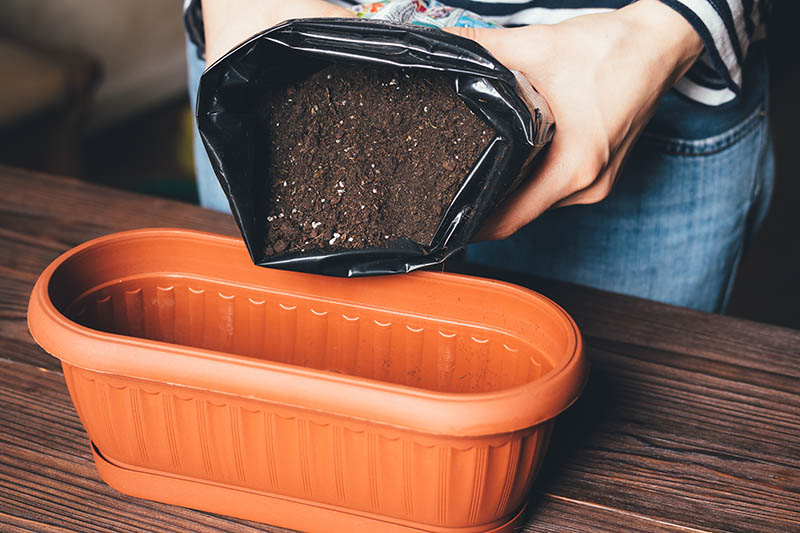
Small gnats can appear inside your potting soil if you aren’t careful about exposure. These tiny flies have very short lifespans, so it can take only a few days for the flies to reproduce and spread to other plants. For this reason, if there is one plant that’s infected, the rest of your potted plants may be, too.
These bugs eat organic matter like plants. Therefore, they can cause serious damage to your plants. While they don’t usually cause visual damage to a plant, they can consume the root hairs, and slowly, this can weaken your plant. Plus, these plants can remain hidden in your soil until you water your next plant, making them challenging to get rid of.
Thankfully, these flies aren’t that durable. They are often easily killed with the right tool, which is great for us. Therefore, removing flies from potting soil isn’t that challenging.
The 7 Tips to Get Rid of Flies in Your Potting Soil
1. Don’t Overwater
Firstly, you should avoid overwatering your plants. These bugs need some moisture to survive. Therefore, if the pot dries up between waterings, you’re going to have a lot fewer gnats. If you don’t have fungus gnats yet, this tip is often enough to prevent them altogether. However, if you do have them, reducing water can disrupt their reproduction cycle and kill many of the adults.
While this method isn’t always enough for those with infestations, it is necessary for many of the other methods to work. Therefore, if you have flies in your plants, it’s important to reduce the amount of water left to sit in the soil.
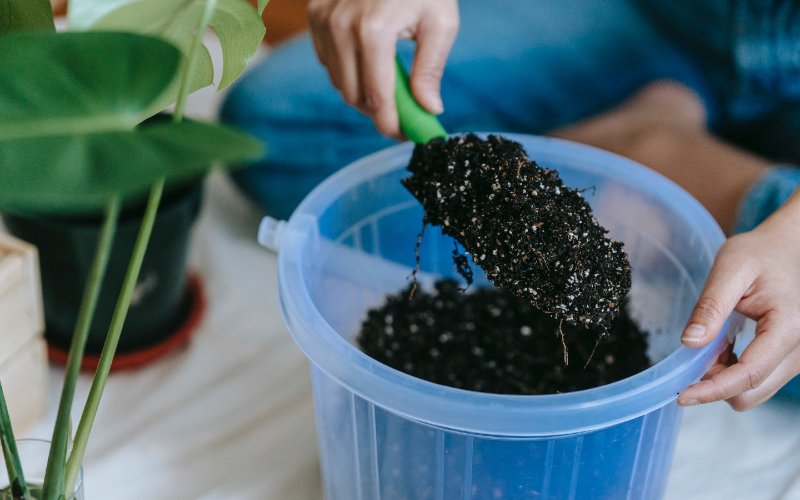
2. Sticky Traps
Sticky traps are a simple control method. You can place these traps near your plants and allow the flies to find them naturally. However, this does only work on older flies. Therefore, it is best when paired with another method, like reducing water or using insecticides. It would take a while for the bug’s lifecycle to be completely diminished if you only attack the end of the lifecycle.
Be sure to remove old traps every so often. These traps do become old, which will limit the amount they work. Luckily, these traps are typically inexpensive and it usually doesn’t cost much to change them regularly.
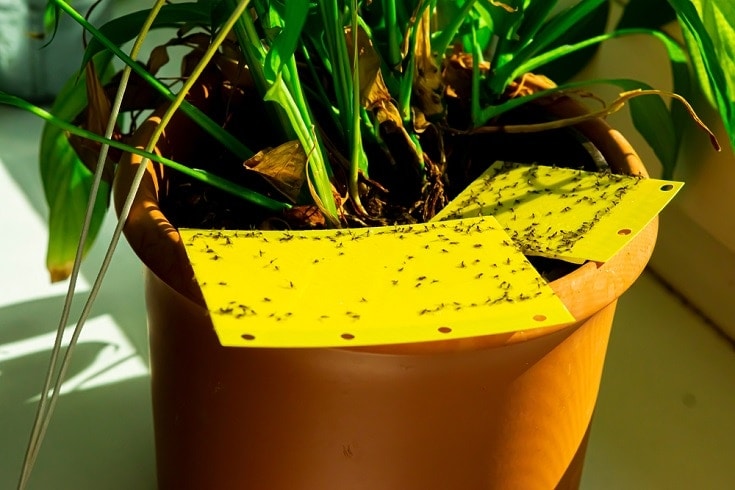
3. Make Vinegar Traps
These flies are similar to fruit flies, and they can be controlled in similar manners. For instance, you can mix vinegar and cider into a shallow container and leave it out. The bugs will be attracted to the mixture and end up stuck in it, drowning.
This method is simple and easy. However, again, it only works on adult bugs. The eggs inside the soil are not affected. Therefore, you may need to use other methods, too, to ensure that you kill all the bugs injuring your plants.
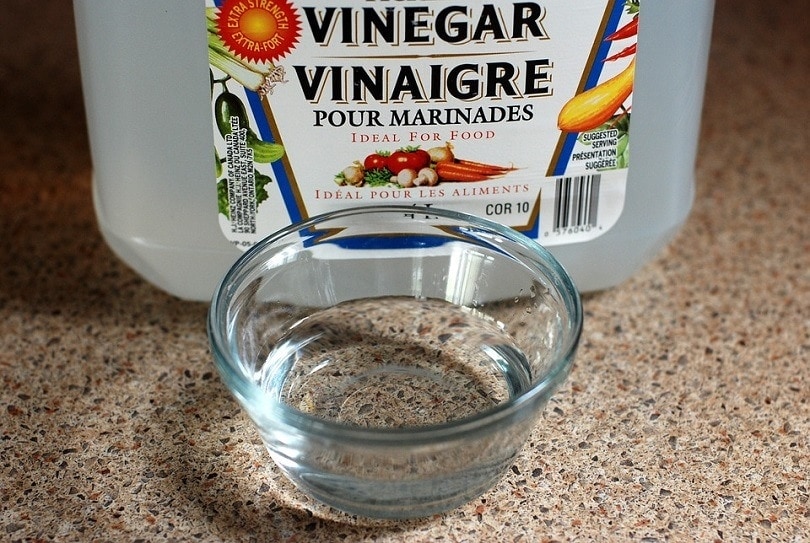
4. Add Nematodes
Nematodes are small worms that naturally live in soil. These can’t be seen with the naked eye, as they are extremely small. However, they consume gnats and other larval insects. Having beneficial nematodes in the soil may be helpful when trying to control other insects. They are nature’s answer to bug problems.
These worms release helpful bacteria into the soil that slowly kill the larval insects of other species. Therefore, they work all the time and kill a wide range of insects.

5. Commercial Option
You can also use commercial options to handle insects like fungus flies. There are tons of insecticides on the market that can kill flies easily. However, these products often contain chemicals that can be dangerous to humans and pets. Therefore, we recommend choosing a more natural option when possible. You can find all sorts of different commercial products, so be sure to do some research before settling on one to purchase.
You’ll often need to apply these products frequently, as they don’t work on all life stages. Many do not kill eggs that are already in the soil, which can then hatch into adults. Therefore, you’ll need to spray and eliminate the adults before they reproduce again.
However, each insecticide has different instructions. Be sure to follow the instructions on the bottle for the best result.
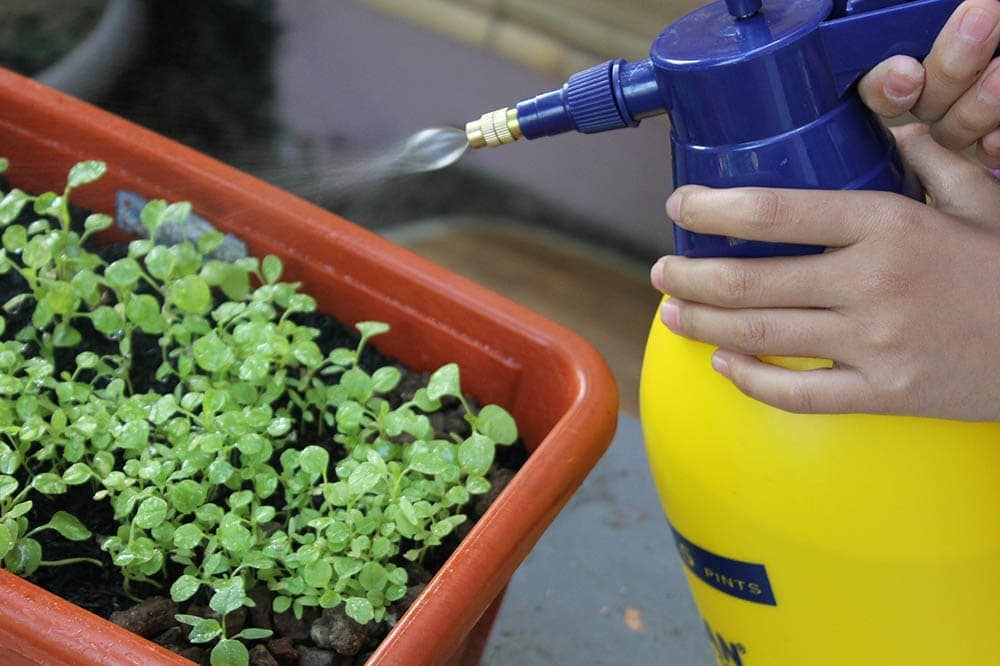
6. Hydrogen Peroxide
You can also use hydrogen peroxide to kill fungus flies on plants. This chemical kills the adults on contact, as well as the larvae. However, it does not affect the eggs so you will have to spray regularly to eliminate them completely. The key is to kill the newly hatched larvae before they have the chance to become adults and reproduce.
To use hydrogen peroxide, we recommend mixing four parts water with one part hydrogen peroxide. Then, spray enough of the solution to soak your soil. While plants typically aren’t bothered by this treatment, some are more sensitive than others.

7. Neem Oil
Neem oil is also a safe and effective way to kill fungus flies. This method will kill adult flies on contact, as well as larvae when applied to the soil. Therefore, it works very similarly to hydrogen peroxide. You can dilute neem oil in water just like hydrogen peroxide and soak the soil with it. You can also use it to spot-kill any adults you see laying around.
You’ll need to reapply this spray regularly to keep the larvae from growing and reproducing. Like other methods, this spray does not affect the eggs.
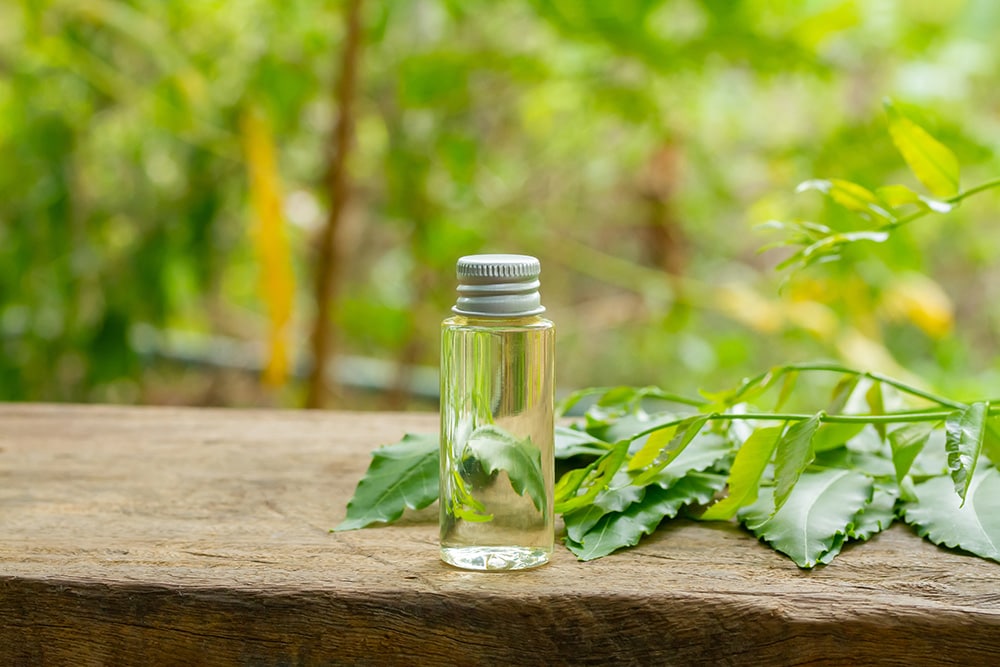
Conclusion
Fungus flies aren’t a threat to human health. However, they can impact your houseplants by eating away at the roots. Plus, they can also be downright annoying, especially if the infestation is particularly bad. To prevent these issues, we highly recommend getting rid of these flies as quickly as possible. The longer the infestation sets up, the longer it takes to get rid of them.
The key to eliminating these bugs is to re-treat often. Many methods do not affect the eggs, which will hatch and start the cycle all over again. You want to kill adults before they have a chance to lay new eggs, which will effectively eliminate the bugs for the foreseeable future.
If you don’t retreat often enough, you may end up in a continuous cycle of hatching fungus flies.
Featured Image Credit: progressman, Shutterstock
Contents
